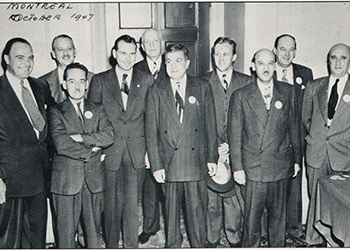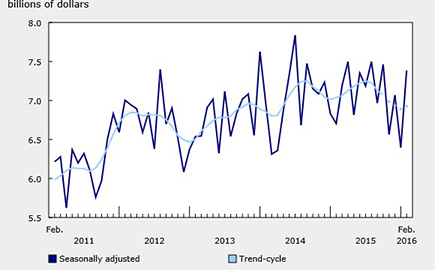Facing a Deficit – 1980

June 9, 2021
An $80,000 deficit from 1979 greeted the CEDA members at the 1980 Annual General Meeting. The more than $300,000 in expenditures in the previous year had outstripped revenue by that much. Treasurer R. Ellis explained there were three reasons for this deficit:
• a decrease in income from membership dues caused by numerous mergers
• increased activity by all committees, especially the Operations Research group
• a loss in operation at the 1979 St. John’s Conference
Mr. Ellis stressed that the association was still financially sound, and noted that neither the annual dues or the conference fees had been increased for several years.
Executive Director Richard Taylor announced his resignation effective in May so that he could take up a position with COPEL in Quebec. A recruitment committee was set up under the Chairmanship of incoming President Jack Nairn to seek a replacement. The committee eventually selected the current President, Stan Wild, an experienced association executive who at that time was employed as President of the Warehousing Association.
At a Board meeting in fall 1980, a motion was made that “in order to cut our conference costs and decrease future expenses, CEDA discontinue the practice of paying the airfare of delegates attending the conference.” Under this 20-year-old provision, CEDA had been paying the return economy airfare of one delegate per member company. Past President Jim Redmond warned the Directors that they should think carefully about this motion; it was his opinion that the practice should be continued, as it encouraged smaller, less wealthy members to attend the annual conference. The Directors considered Mr. Redmond’s remarks, but voted to discontinue paying airfare to conferences, subject to the approval of the 1981 Annual General Meeting.
To ensure that large member companies in CEDA did not pay a disproportionally large membership fee, a $200 million dollar ceiling was placed on annual sales for the purpose of calculating member fees. The standard multiplier used in calculating membership costs had made no allowances for members with a larger volume of sales; the fee ceiling allowed larger members to limit their membership fees. This ceiling was seen by the directors as a stop-gap measure until a more equitable system of determining membership dues was decided upon.
The Board decided to set up a system whereby members would be required to report their annual sales in confidence to the Executive Director, so that membership fees could be accurately computed. Up until this time the Executive Director had estimated members sales and it was generally agreed that most estimates were low. (The only members who ever complained about the estimates were those whose sales were overestimated… and there were precious few of those.)
Acting on a recommendation made at meetings held in September and November 1979, the Directors approved a draft bylaw that would change the titles of the CEDA Executive. The President would become the Chairman of the Board, Vice Presidents would become Vice Chairmen of the Board, and the Executive Director would become President. The proposed changes required the approval of the members and were therefore to be circulated to members with the agenda for the 1981 Annual meeting with a recommendation that they be approved. (The change was voted on and approved the next year.
Source: CEDA: Fifty Years of Service – An Historical Review of the Canadian Electrical Distributors Association, 1934 to 1984, Kerrwil Publications. Please feel free to reach out to us any time if you have great photos, historical anecdotes or perspectives. We would love to hear from you; linegoyette@kerrwil.com.
Photo courtesy of jarmoluk at Pixabay.











